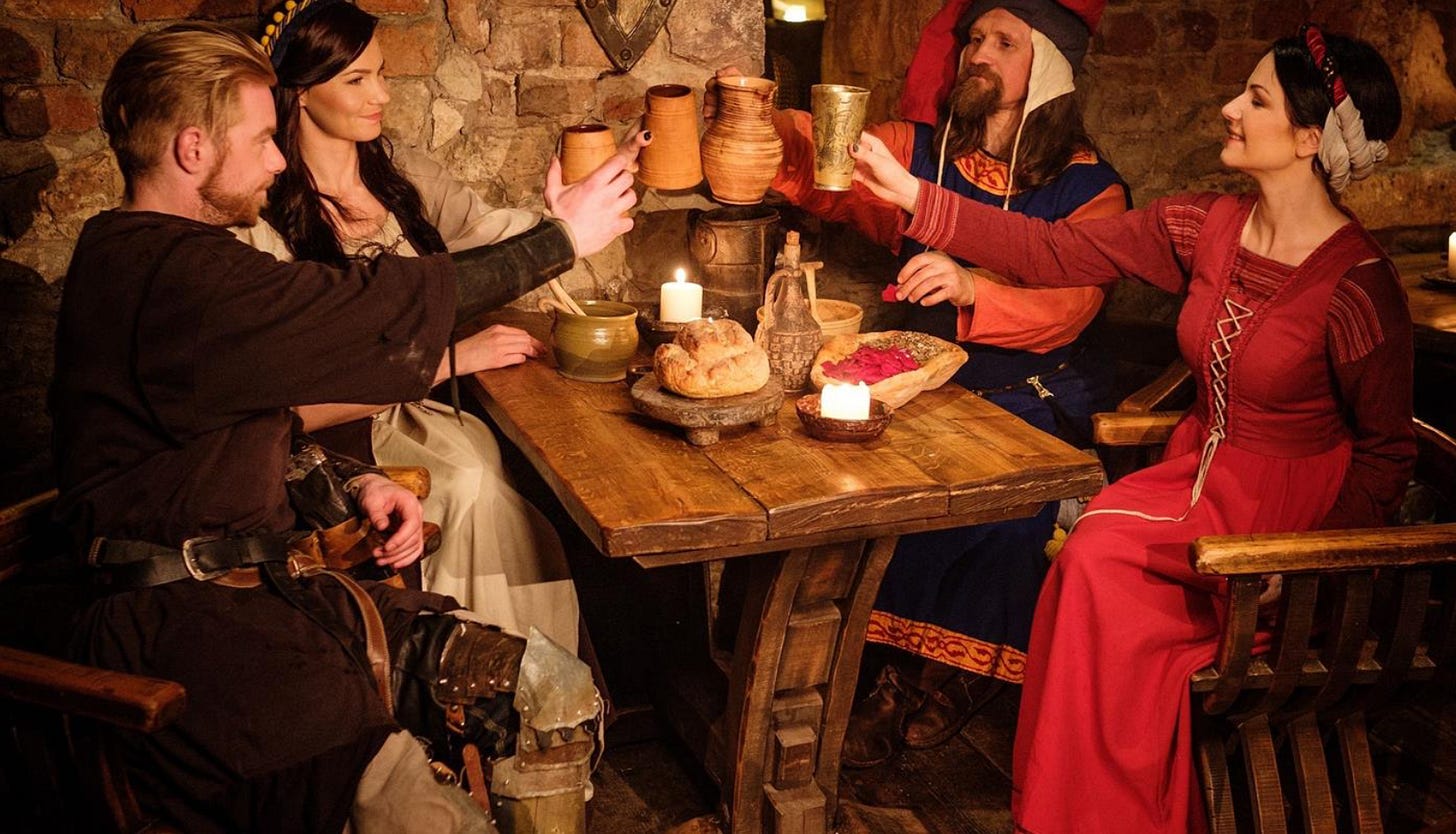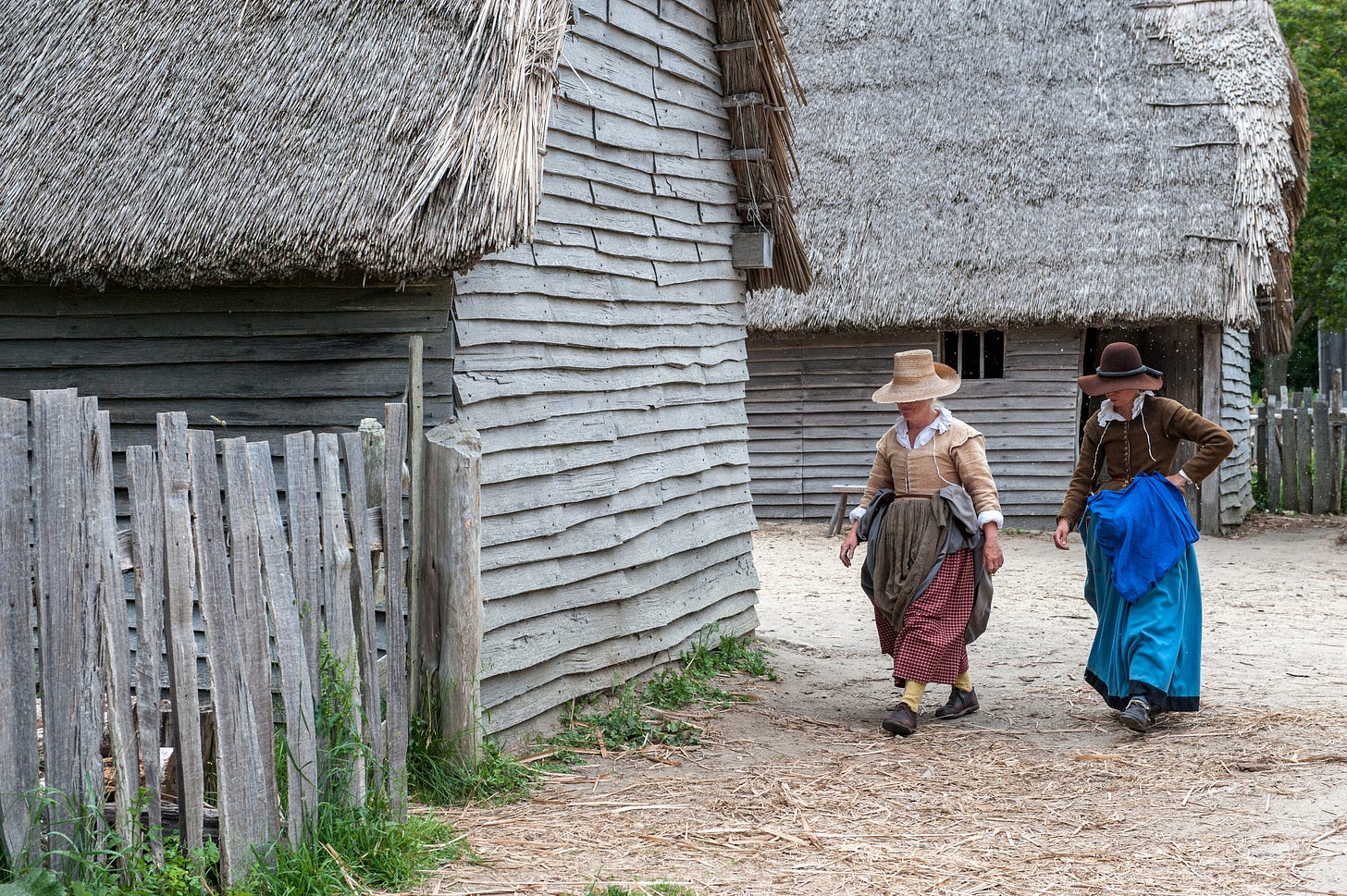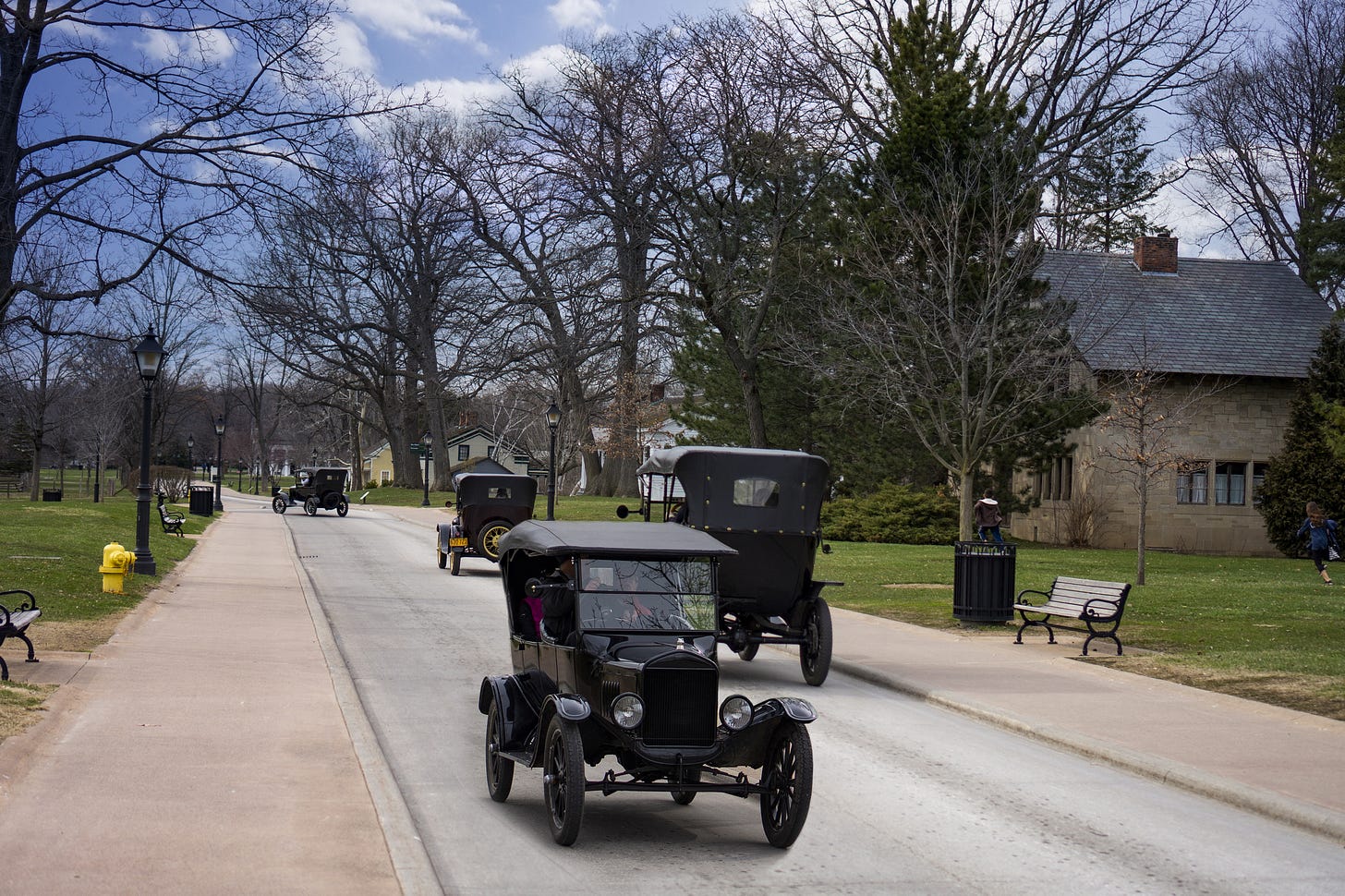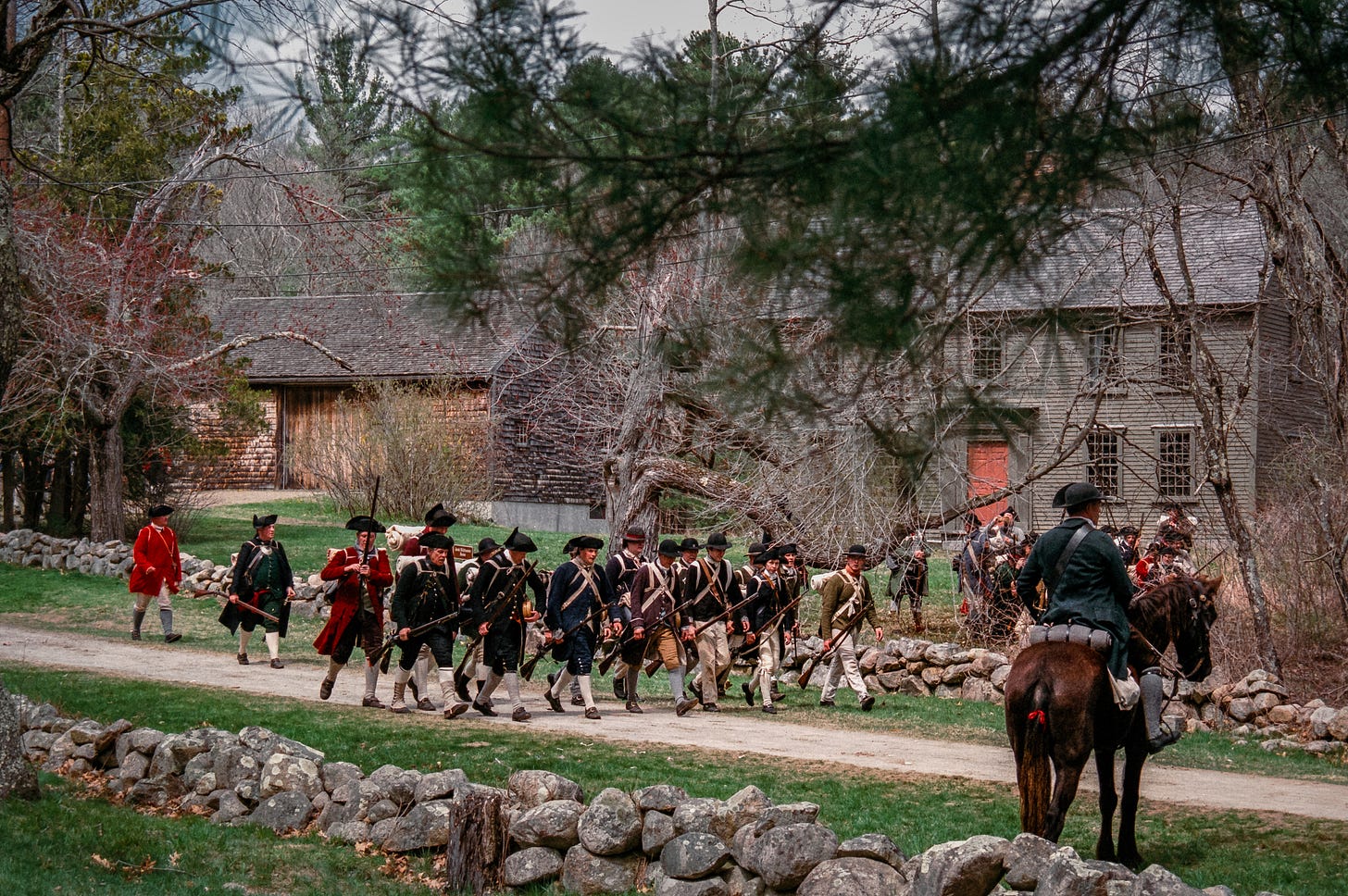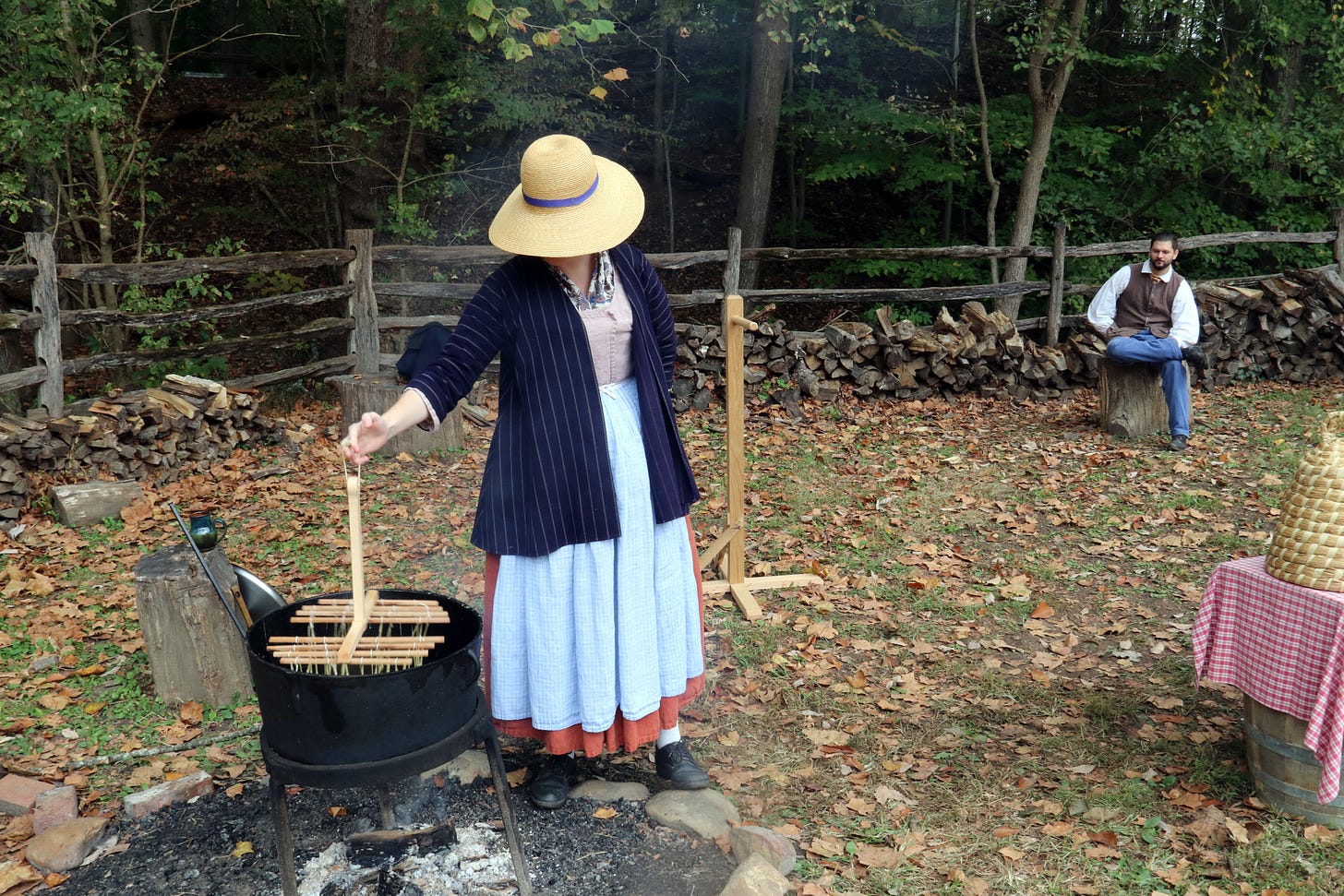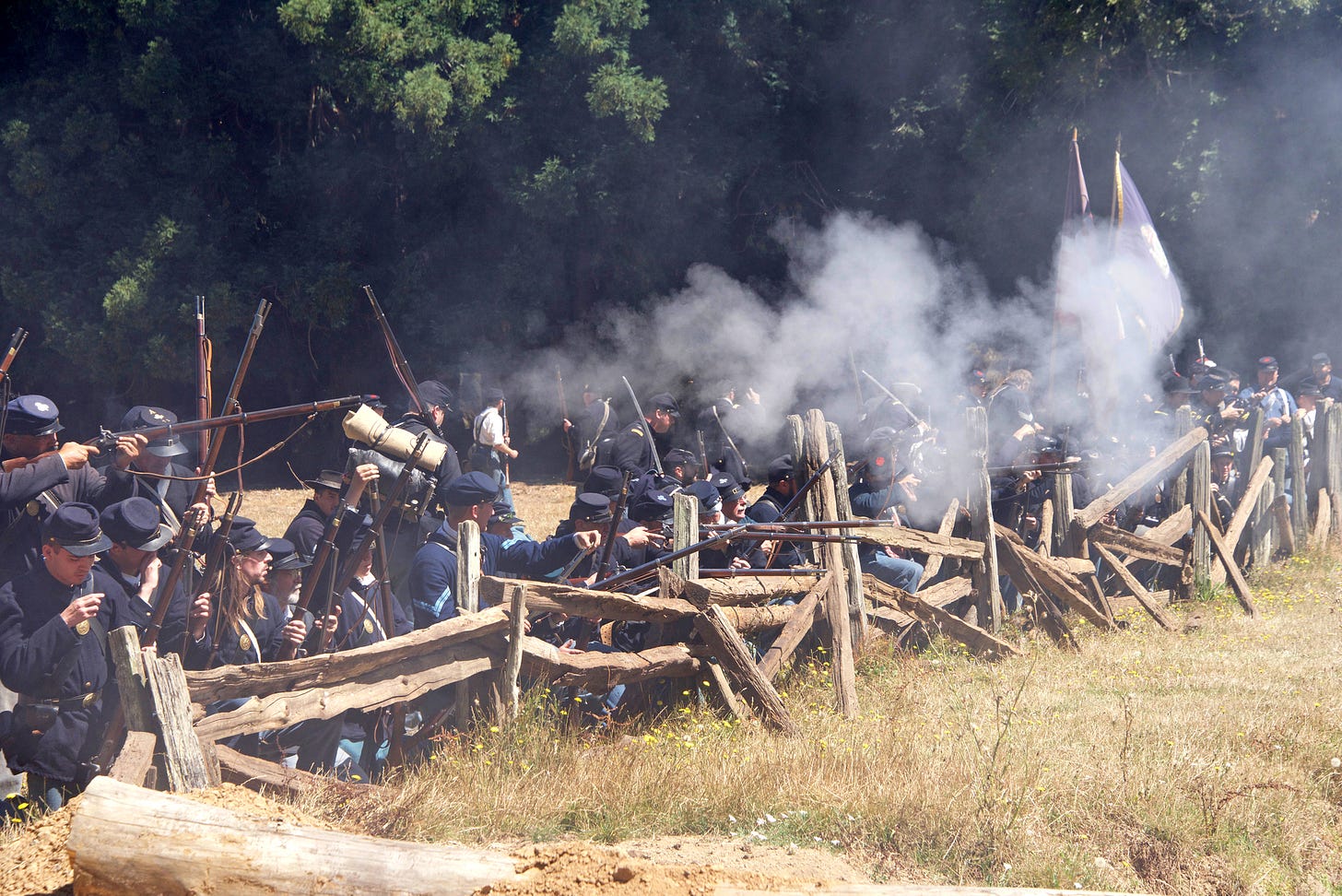Spending time traveling through living history adds experiences from the past to travel.
From Plimoth Plantation in Massacusettes to Mount Vernon on the Potomac, history comes alive for visitors.
Talk about new dining experiences! World travelers Ron and Debbie Newmark have sampled countless cuisines in various settings, but nothing like the meal served at the Bors Hede Inne.
First, they were treated to “genteel lavering” (hand washing). Then they received “trenchers,” half-loaves of bread that doubled as plates. That was followed by dishes prepared from Medieval recipes, which they consumed as a minstrel sang songs that traced their origins back to feudal times.
The Newmarks are not time travelers. They enjoyed an event that could, and no doubt did, occur in 14th-century England. The couple was visiting the Camlann Medieval Village in Carnation, a tiny town in Washington State. It’s one of many living history museums where visitors may immerse themselves in life as it was led long ago.
Debbie enjoyed chatting with authentically attired individuals who described their everyday lives and shared village gossip. Ron was intrigued by watching the blacksmith and carpenter doing their daily chores.
Going back to the 17th century
Historical interpreters who dress, act and speak in the 17th-century way discuss their lives and answer questions posted by guests at the Plimoth Plantation in Massachusetts. They demonstrate cooking, animal husbandry, and other chores in and around timber-framed houses that are furnished with reproductions of objects the Pilgrims owned.
English settlers in 1630 chose a tidal inlet near present-day Portsmouth, New Hampshire, as a safe harbor for a settlement. Historians tell us they called it Strawberry Bank for the profusion of wild fruit growing nearby.
Their life is reproduced at the Strawbery Banke Museum, a 10-acre complex with 32 historic buildings and costumed role players who re-enact the lives of people there. John Stavers and his daughters manage their 1777 tavern and stagecoach stop. Mrs. Ichabod Goodwin, the wife of New Hampshire’s governor, tends her formal garden. The barrel maker, weaver, and other craft people demonstrate their skills and invite audience members to try their hand at their trade.
Light bulbs and alighting into the skies
Over 300 years of history, from the 1700s to the present, are represented at Greenfield Village in Dearborn, Michigan. The innovations and lasting impact of people who changed the country and the world are brought to life.
Step into the lab where Thomas Edison had his light bulb moment and the workshop where the Wright Brothers began their quest to reach for the sky. You can ride in a Model T Ford, watch an 1867 baseball game and, if you wish, take part in a muster drill under the command of Captain Miles Standish.
Reliving the American Revolution
Some living history destinations bring to life chapters of the American Revolution. Thousands of people flock to historic Lexington and Concord, Massachusetts, each April on Patriots’ Day weekend to commemorate the war's opening battle.
Events include a reenactment of the skirmish and Paul Revere’s ride and tours of historic landmarks like Buckman Tavern (circa 1710), a favorite gathering place of the Militiamen. They were members of the New England Colonial Militia who gained fame for their ability to be ready to fight “at a minute’s notice.”
No one is more closely associated with America’s battle for freedom from British rule than George Washington, who comes alive at Mount Vernon, Virginia. The original estate was built by George’s father around 1734, long before his son would become commander of the Continental Army and, later, the first president.
George Washington and his wife come alive at Mount Vernon along the Potomac River.
Those who visit Mount Vernon today may meet George and his wife Martha, view demonstrations of 18th-century household activities, and challenge themselves by contemplating how they would deal with situations that Washington faced. These include whether to risk your soldiers’ lives by undertaking the treacherous crossing of the Delaware River and how to overcome doubts and despair among the troops that brought them to the brink of mutiny.
One focus of exhibits and activities at Mount Vernon is the innovative farming practices that Washington devised. Agriculture is the main attraction at the Farmer’s Museum in Cooperstown, New York. The land has been used to grow crops since 1813, and exhibits and interactive workshops recreate rural life. The collection of early artifacts is augmented by a blacksmith shop, general store, and other original structures.
The uncivil Civil War
At the outbreak of the Civil War, young men from Cooperstown were among northerners who volunteered to serve in the Union Army. Numerous reenactments today recall battles of the War Between the States, some in locales that may come as a surprise.
Did you know that Civil War skirmishes took place in Florida, Arkansas, and Oklahoma? They were among battles that prompted Northern authorities to question the wisdom of involving their troops in what they considered to be states of relatively little military importance.
“This experience isn’t for everyone.” Those words of caution refer to Follow the North Star, a participatory program offered at the Conner Prairie history park in Indianapolis. It transports participants back to 1836 as they play the role of escaped slaves following the Underground Railroad north to what they hope will be their freedom.
As they trek over rough terrain in all kinds of weather, they encounter sympathetic allies and racist antagonists. This experience provides a very emotional reaction to a dark page of American history. Other living history encounters offer more positive examples of ways to travel back in time.
Victor Block
After gallivanting throughout the United States and to more than 75 other countries worldwide and writing about what he sees, does, and learns, Victor Block retains the travel bug. He believes that travel is the best possible education and claims he still has much to learn. He loves to explore new destinations and cultures, and his stories about them have won many writing awards.


